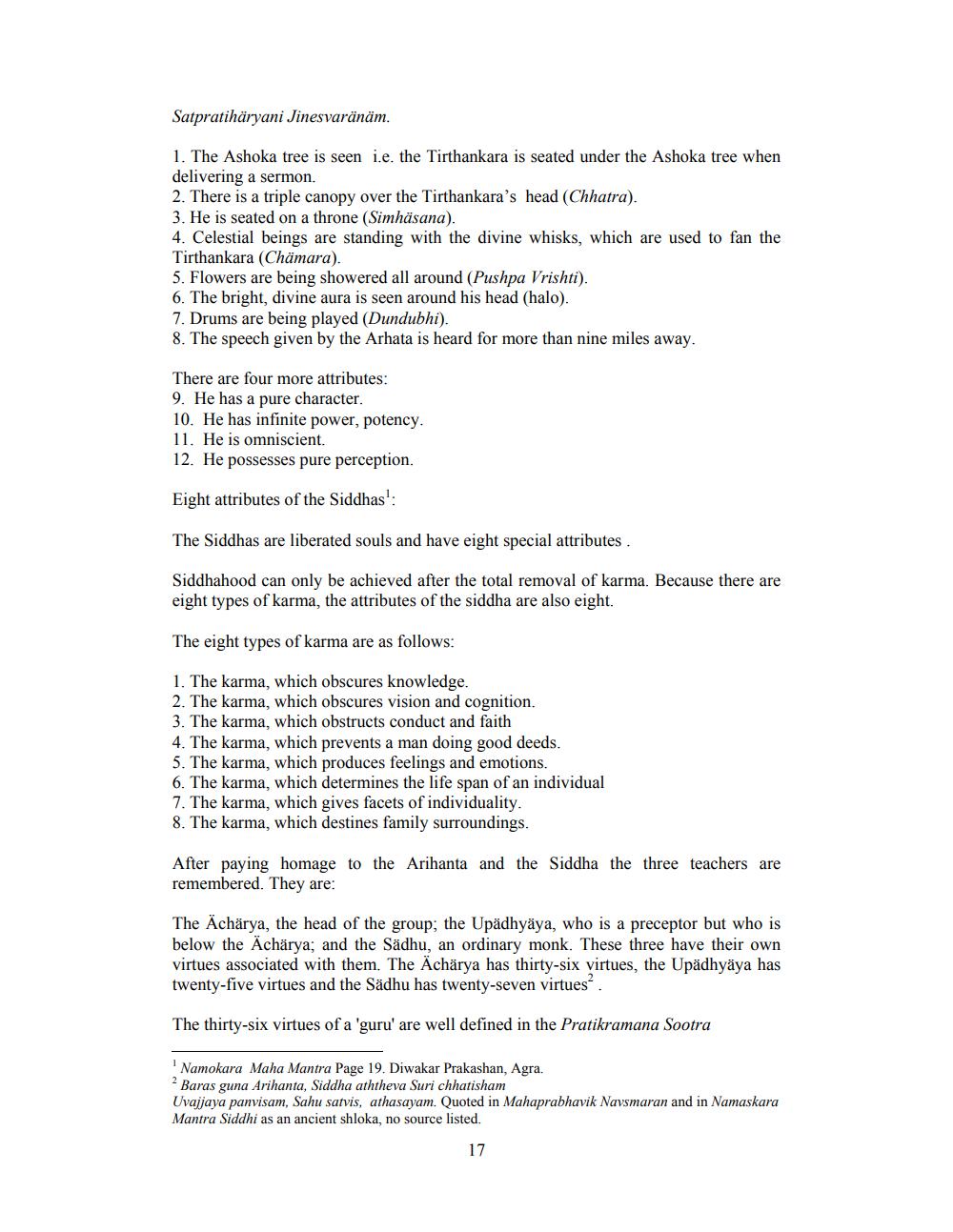________________
Satpratihäryani Jinesvaränäm.
1. The Ashoka tree is seen i.e. the Tirthankara is seated under the Ashoka tree when delivering a sermon. 2. There is a triple canopy over the Tirthankara's head (Chhatra). 3. He is seated on a throne (Simhäsana). 4. Celestial beings are standing with the divine whisks, which are used to fan the Tirthankara (Chämara). 5. Flowers are being showered all around (Pushpa Vrishti). 6. The bright, divine aura is seen around his head (halo). 7. Drums are being played (Dundubhi). 8. The speech given by the Arhata is heard for more than nine miles away.
There are four more attributes: 9. He has a pure character. 10. He has infinite power, potency. 11. He is omniscient. 12. He possesses pure perception.
Eight attributes of the Siddhas!:
The Siddhas are liberated souls and have eight special attributes.
Siddhahood can only be achieved after the total removal of karma. Because there are eight types of karma, the attributes of the siddha are also eight.
The eight types of karma are as follows:
1. The karma, which obscures knowledge. 2. The karma, which obscures vision and cognition. 3. The karma, which obstructs conduct and faith 4. The karma, which prevents a man doing good deeds. 5. The karma, which produces feelings and emotions. 6. The karma, which determines the life span of an individual 7. The karma, which gives facets of individuality. 8. The karma, which destines family surroundings.
After paying homage to the Arihanta and the Siddha the three teachers are remembered. They are:
The Ächärya, the head of the group; the Upadhyaya, who is a preceptor but who is below the Achärya; and the Sädhu, an ordinary monk. These three have their own virtues associated with them. The Achärya has thirty-six virtues, the Upadhyaya has twenty-five virtues and the Sädhu has twenty-seven virtues.
The thirty-six virtues of a 'guru' are well defined in the Pratikramana Sootra
Namokara Maha Mantra Page 19. Diwakar Prakashan, Agra. 2 Baras guna Arihanta, Siddha aththeva Suri chhatisham Uvajjava panvisam, Sahu satvis, athasayam. Quoted in Mahaprabhavik Navsmaran and in Namaskara Mantra Siddhi as an ancient shloka, no source listed.
17




